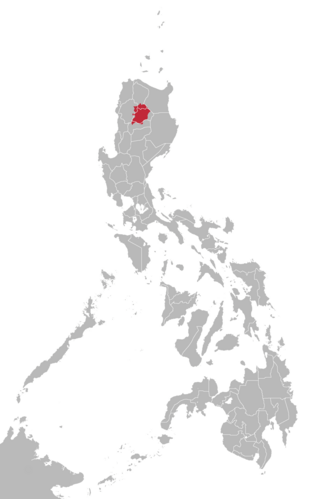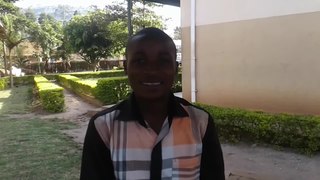Northeast Malakula, or Uripiv-Wala-Rano-Atchin, is a dialect chain spoken on the islands of Uripiv, Wala, Rano, and Atchin and on the mainland opposite to these islands. Uripiv-Wala-Rano-Atchin is spoken today by about 9,000 people. Literacy rate of its speakers in their own language is 10–30%.
Tauya is a Rai Coast language spoken in the Ramu River valley, Madang Province, Papua New Guinea by approximately 350 people. The Linguistics Department at the University of Manitoba in Winnipeg, Canada, has Tauya language resources.

Kalinga is a dialect continuum of Kalinga Province in the Philippines, spoken by the Kalinga people, alongside Ilocano. The Banao Itneg variety is not one of the neighboring Itneg languages.
Naba is a Nilo-Saharan language spoken by approximately 500,000 people in Chad. Those who speak this language are called Lisi, a collective name for three closely associated ethnic groups, the Bilala, the Kuka and the Medogo, that represent the three dialects in which Naba is subdivided. They live mainly in the Batha Prefecture, but the Kuka are also in Chari-Baguirmi. Ethnologue estimates the lexical similarity among the three dialects to be no less than 99%. Arabic is often spoken as a second language.

Kiga is a Great Lakes Bantu language of the Kiga people (Bakiga). Kiga is a similar and partially mutually intelligible with the Nkore language. It was first written in the second half of the 19th century. Kiga is largely spoken in the ancient Kigezi region which includes about 5 districts, namely Rubanda, Rukiga, Kabale, Kanungu and some parts of Rukungiri. As of 2021, Kiga is spoken natively by about 1.3 million people in Uganda.
Wichí Lhamtés Nocten, or Weenhayek, is a Wichí language primarily spoken in Bolivia, where an estimated 1,810 Wichí people spoke it in 1994. An additional one hundred people spoke the language in Argentina in 1994. In Bolivia, the language is spoken in the north-central Tarija Department, southwest of Pilcomayo River, and in Cordillera de Pirapo. In Argentina, it is spoken in from the northern border south to Tartagal, Salta. The language is also called Mataco, Bolivian, Mataco Nocten, Nocten, Noctenes, Oktenai, and Weenhayek; the last name is used in the Bolivian constitution of 2009.
Temein, also known as Ron(g)e, is an Eastern Sudanic language spoken by the Temein people of the Nuba Hills in Sudan.
Kafa or Kefa is a North Omotic language spoken in Ethiopia at the Keffa Zone. It is part of the Ethiopian Language Area, with SOV word order, ejective consonants, etc.
Kgalagadi is a Bantu language spoken in Botswana, along the South African border. It is spoken by about 40,000 people. In the language, it is known as Shekgalagari.
Laz is a South Caucasian language. It is sometimes considered as a southern dialect of Zan languages, the northern dialect being the Mingrelian language.
Mingrelian is a Kartvelian language that is mainly spoken in the Western Georgian regions Samegrelo and Abkhazia. In Abkhazia the number of Mingrelian speakers declined dramatically in the 1990s as a result of heavy ethnic cleansing of ethnic Georgians, the overwhelming majority of which were Mingrelians.
The Maringarr language is a moribund Australian Aboriginal language spoken along the northwest coast of the Northern Territory.
Mundang is an Mbum language of southern Chad and northern Cameroon.
Somray, or Northern Chong, is a Pearic language of Cambodia.
Musgu is a cluster of closely related language varieties of the Biu–Mandara subgroup of the Chadic languages spoken in Cameroon and Chad. The endonym is Mulwi. Blench (2006) classifies the three varieties as separate languages. Speakers of the extinct related language Muskum have switched to one of these.
Kayan is a dialect cluster spoken by the Kayan people of Borneo. It is a cluster of closely related dialects with limited mutual intelligibility, and is itself part of the Kayan-Murik group of Austronesian languages.
Kalagan is an Austronesian dialect cluster of the Davao Region of Mindanao in the Philippines. It is also spoken in a few parts of Caraga, still in Mindanao.
Ot Danum is a Barito language of the central Borneo, Indonesia, spoken by the Ot Danum people. Dialects include Cihie and Dohoi.
Taliabo (Taliabu) is a Malayo-Polynesian language spoken on the island of the same name in the Moluccas of Indonesia.
Na is a language of the Naish subbranch of the Naic group of the Sino-Tibetan languages.


